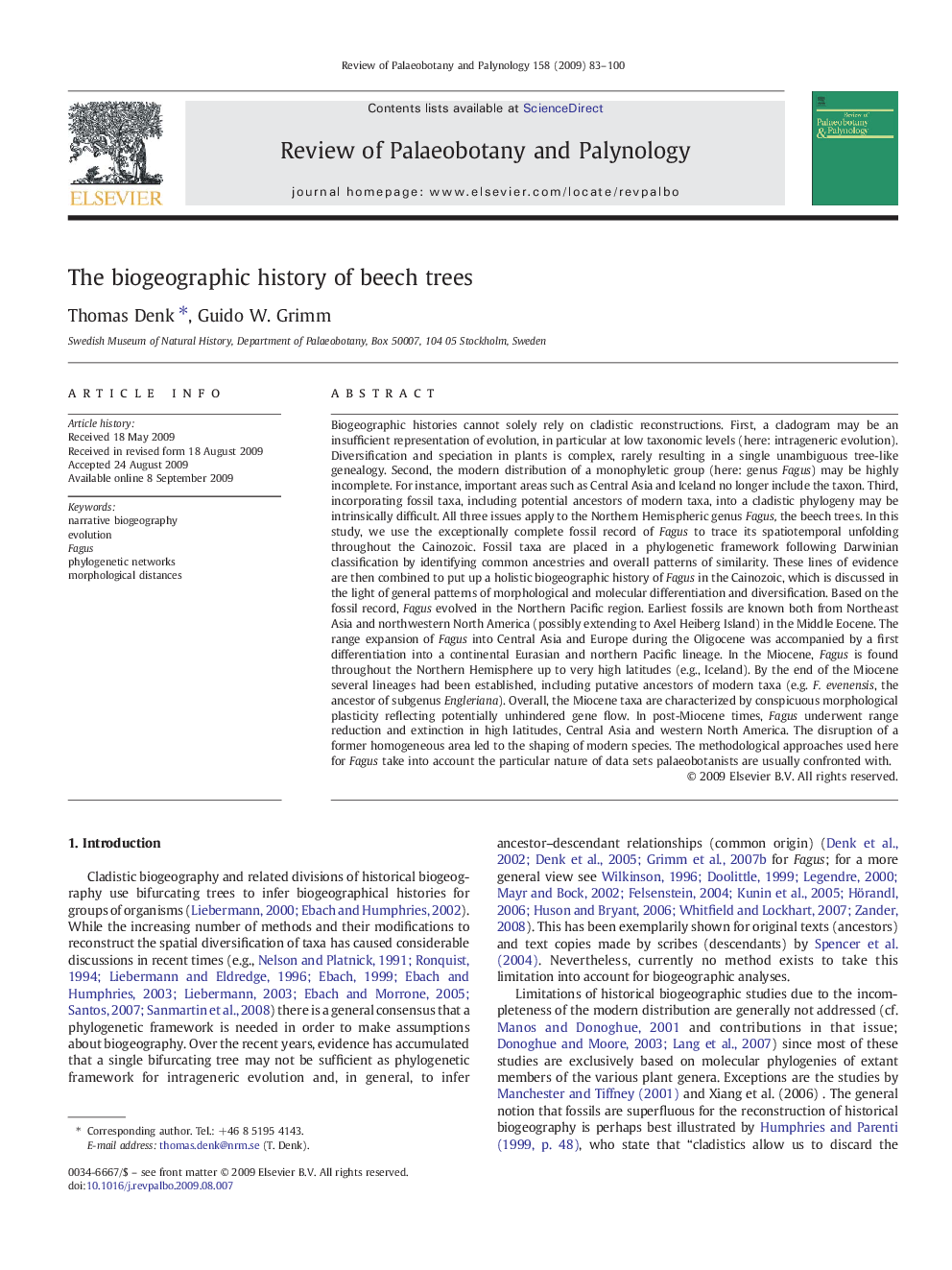| کد مقاله | کد نشریه | سال انتشار | مقاله انگلیسی | نسخه تمام متن |
|---|---|---|---|---|
| 4750753 | 1642551 | 2009 | 18 صفحه PDF | دانلود رایگان |

Biogeographic histories cannot solely rely on cladistic reconstructions. First, a cladogram may be an insufficient representation of evolution, in particular at low taxonomic levels (here: intrageneric evolution). Diversification and speciation in plants is complex, rarely resulting in a single unambiguous tree-like genealogy. Second, the modern distribution of a monophyletic group (here: genus Fagus) may be highly incomplete. For instance, important areas such as Central Asia and Iceland no longer include the taxon. Third, incorporating fossil taxa, including potential ancestors of modern taxa, into a cladistic phylogeny may be intrinsically difficult. All three issues apply to the Northern Hemispheric genus Fagus, the beech trees. In this study, we use the exceptionally complete fossil record of Fagus to trace its spatiotemporal unfolding throughout the Cainozoic. Fossil taxa are placed in a phylogenetic framework following Darwinian classification by identifying common ancestries and overall patterns of similarity. These lines of evidence are then combined to put up a holistic biogeographic history of Fagus in the Cainozoic, which is discussed in the light of general patterns of morphological and molecular differentiation and diversification. Based on the fossil record, Fagus evolved in the Northern Pacific region. Earliest fossils are known both from Northeast Asia and northwestern North America (possibly extending to Axel Heiberg Island) in the Middle Eocene. The range expansion of Fagus into Central Asia and Europe during the Oligocene was accompanied by a first differentiation into a continental Eurasian and northern Pacific lineage. In the Miocene, Fagus is found throughout the Northern Hemisphere up to very high latitudes (e.g., Iceland). By the end of the Miocene several lineages had been established, including putative ancestors of modern taxa (e.g. F. evenensis, the ancestor of subgenus Engleriana). Overall, the Miocene taxa are characterized by conspicuous morphological plasticity reflecting potentially unhindered gene flow. In post-Miocene times, Fagus underwent range reduction and extinction in high latitudes, Central Asia and western North America. The disruption of a former homogeneous area led to the shaping of modern species. The methodological approaches used here for Fagus take into account the particular nature of data sets palaeobotanists are usually confronted with.
Journal: Review of Palaeobotany and Palynology - Volume 158, Issues 1–2, December 2009, Pages 83–100